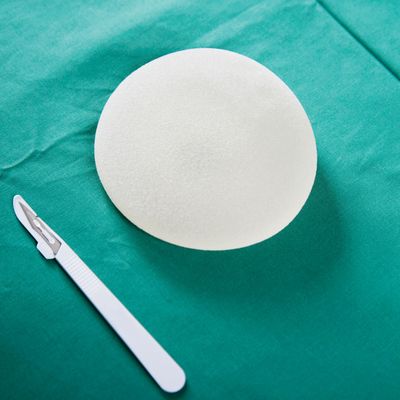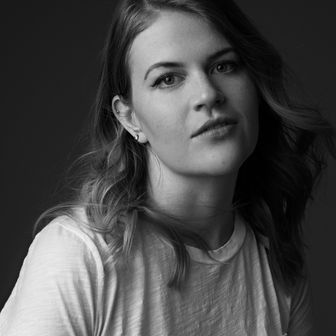
Last week, pharmaceutical company Allergan recalled several of its Biocell textured breast-implant models at the request of the Food and Drug Administration. The recall comes three months after the FDA declined to ban the Biocell implants, which have been linked to a rare cancer known as anaplastic large-cell lymphoma (BIA-ALCL).
“Based on new data, our team concluded that action is necessary at this time to protect the public health,” the FDA’s principal deputy commissioner, Amy Abernethy, M.D., Ph.D., said in a release.
According to the FDA, 573 cases of, and 33 deaths from, the cancer have been reported worldwide. Of the 573 cases, 481 were “clearly attributed to Allergan Biocell implants,” the New York Times reports, and of the deaths, “the type of implant was known in 13 cases, and in 12 of those cases the maker was Allergan.”
In the U.S. — where millions of people have breast implants, and hundreds of thousands have Biocell implants — the recall has sparked a small panic.
“I’m getting 10,000 phone calls from patients who are worried about their implants,” Dr. Mia Talmor, a plastic and reconstructive surgeon at Weill Cornell Medicine and NewYork-Presbyterian told the Cut.
Talmor notes that while the incidence of disease surrounding textured implants in general is exceedingly low, there is an “exponentially higher risk” surrounding the Biocell implants. Indeed, the FDA found that the recalled implants carry a risk for BIA-ALCL six times higher than other textured implants used domestically.
Experts aren’t sure exactly why textured implants are linked to a higher risk of ALCL. According to the Times, some researchers believe that bacteria can become trapped in the ridges of the textured surface. Others think some patients may be “genetically predisposed to have an inflammatory reaction to the texturing that can gradually lead to cancer.”
Both Talmor and the FDA are careful to emphasize that people who have Biocell implants but no symptoms of BIA-ALCL, such as swelling and fluid accumulation around the implant, do not need to have the devices removed.
“It’s causing quite a bit of anxiety,” Talmor said about the FDA’s decision. “When someone recalls the breaks in your car, you go and you have them taken out. And that hasn’t been the recommendation.”
Why use textured implants in the first place? Textured implants stick better to the inside of the breast, Talmor explained, a quality that is especially important for anatomically or “teardrop” shaped implants — which are narrower at the top and heavier at the bottom — as opposed to round ones. Teardrop types of implants are often used for breast reconstruction, or for individuals with no breasts, or extremely small ones, to help make the implants look more natural. These implants can improve the breasts’ aesthetic, but if they shift inside the breast, the appearance becomes distorted. A textured surface improves the chances of them adhering to the tissue and not moving around.
Although most breast augmentations are safe when done by a certified professional, and maintained with regular checkups, it is nonetheless a serious medical procedure than can have surgical complications or leave hardened scar tissue surrounding the implant. As Amanda Mull noted at The Atlantic earlier this year, these complications are not always taken seriously because there’s a “constant cultural encouragement” to see breast augmentation as “no big deal.” “This dismissiveness gives license to some practitioners to characterize a medical device as a fun, sexy purchase your hubby will love instead of a serious lifetime commitment to an invasive procedure that will permanently alter your body,” Mull wrote.
When I asked Talmor how well she thought we, as a society, truly understood the risks associated with breast implants, she emphasized that it’s a decision patients should take as seriously as “any surgical decision-making,” and that it’s important to find a surgeon with lots of experience. She added, however, that the field of plastic surgery is particularly attuned to potential problems with implants because so many thousands of people have them (over 300,000 breast augmentations were performed in 2018 alone, according to a report from the American Society of Plastic Surgeons) and also because there has been more research done on them than, say, orthopedic implants, which are also made of silicone.
Talmor pointed to the Plastic Surgery Foundation’s Profile database, which looks specifically at outcomes for breast implants and ALCL, as an important development and resource for surgeons. Where once the FDA data on the condition going to surgeons wasn’t always screened properly, with multiple reporting on a single case, for example, the Profile database is more closely controlled and doctors are getting updated information every couple of months.
She conceded that, like any medical field, plastic surgery is constantly evolving, and there’s always the potential that “another obscure disease comes along that we know nothing about.” The important thing, though, Talmor says, is that we are talking about these risks.
“What we are talking about is a one-in-3,000 to one-in-30,000 risk with that particular type of implant,” she said of the Biocell products. And while the risk of this cancer is so low, “it’s a good thing that we all talk about it, because at least then we know, and we discussed it with the patients. And in that one in 30,000 case, if someone comes in with really swollen breasts, we know what to do with it, we don’t just ignore it.”


